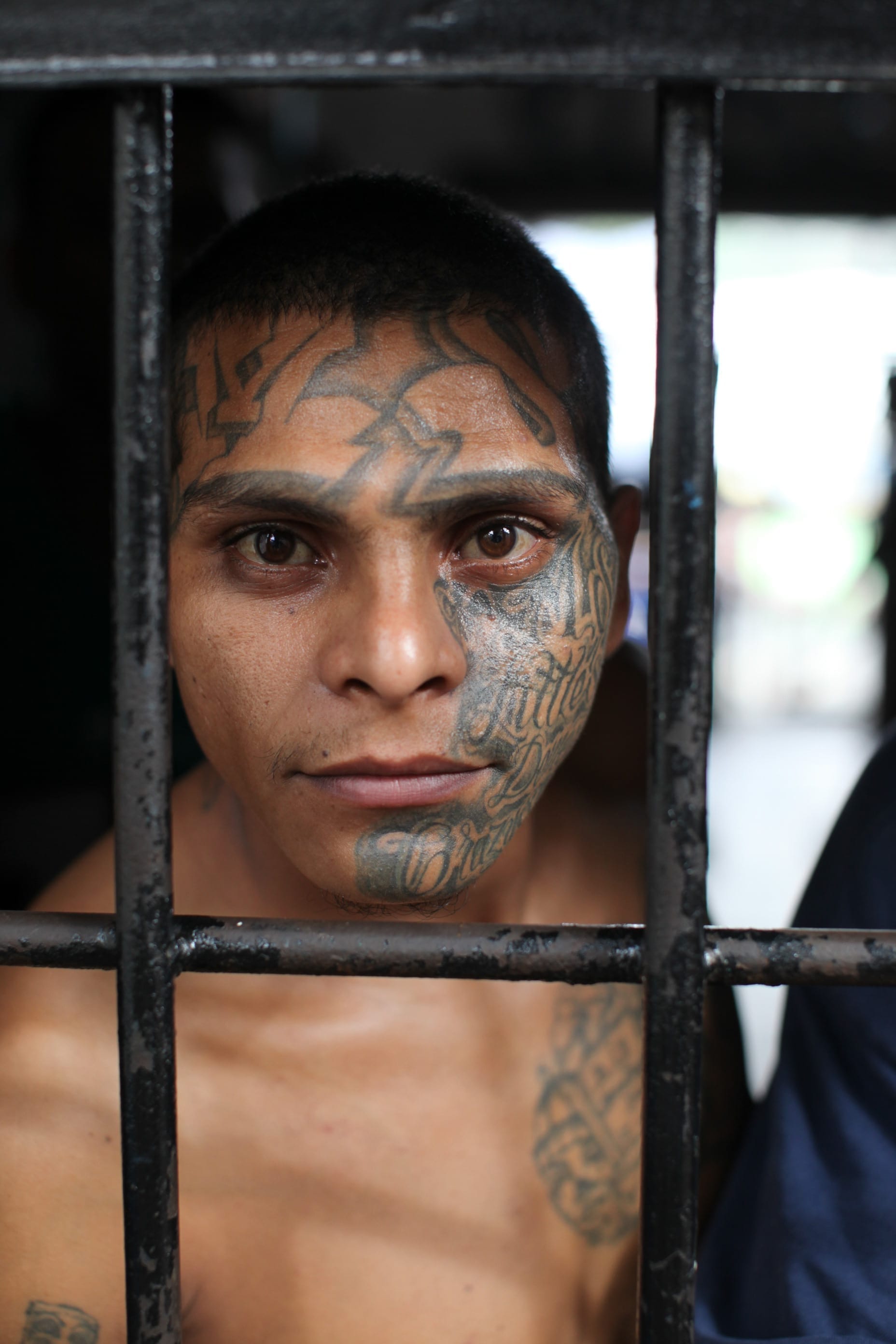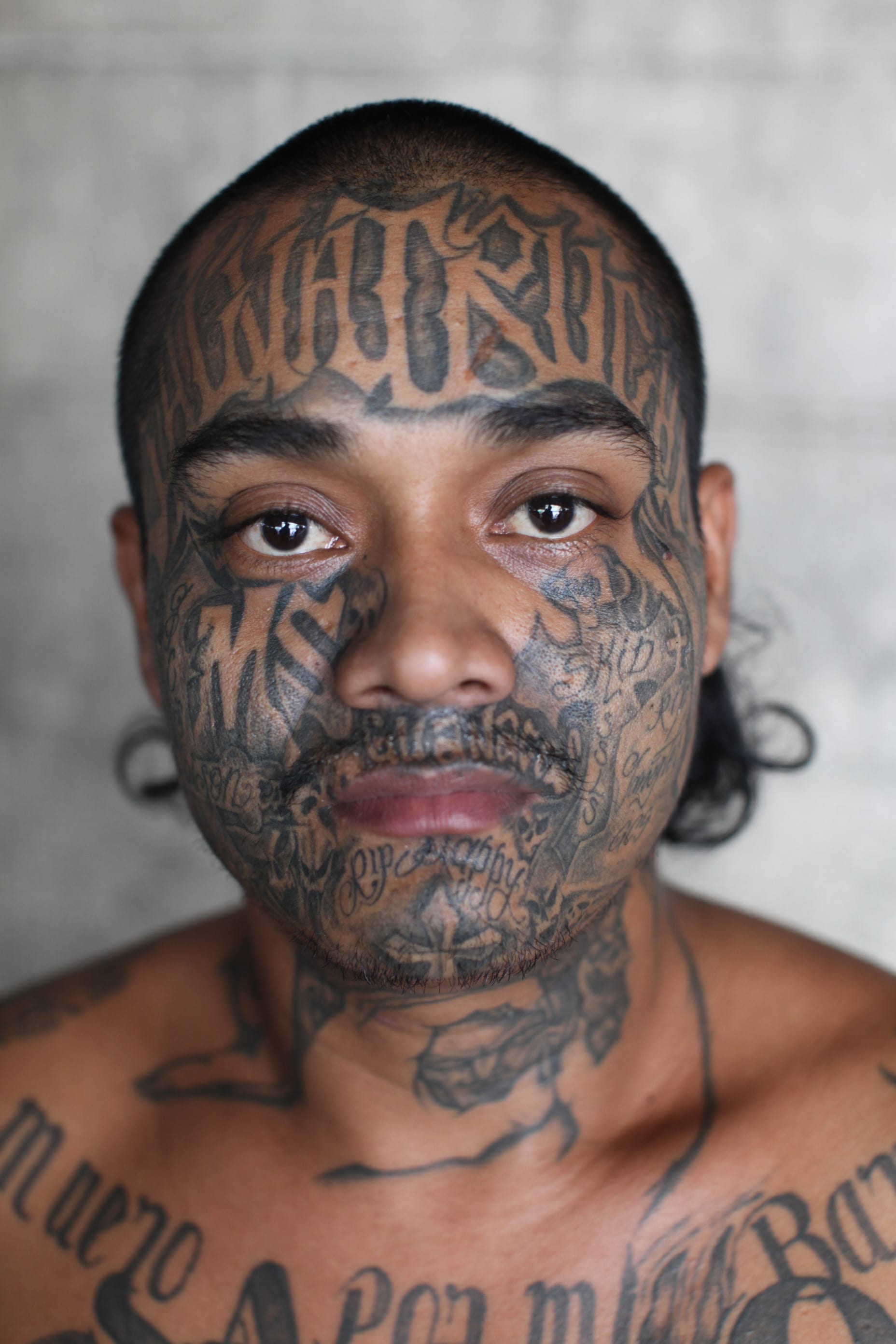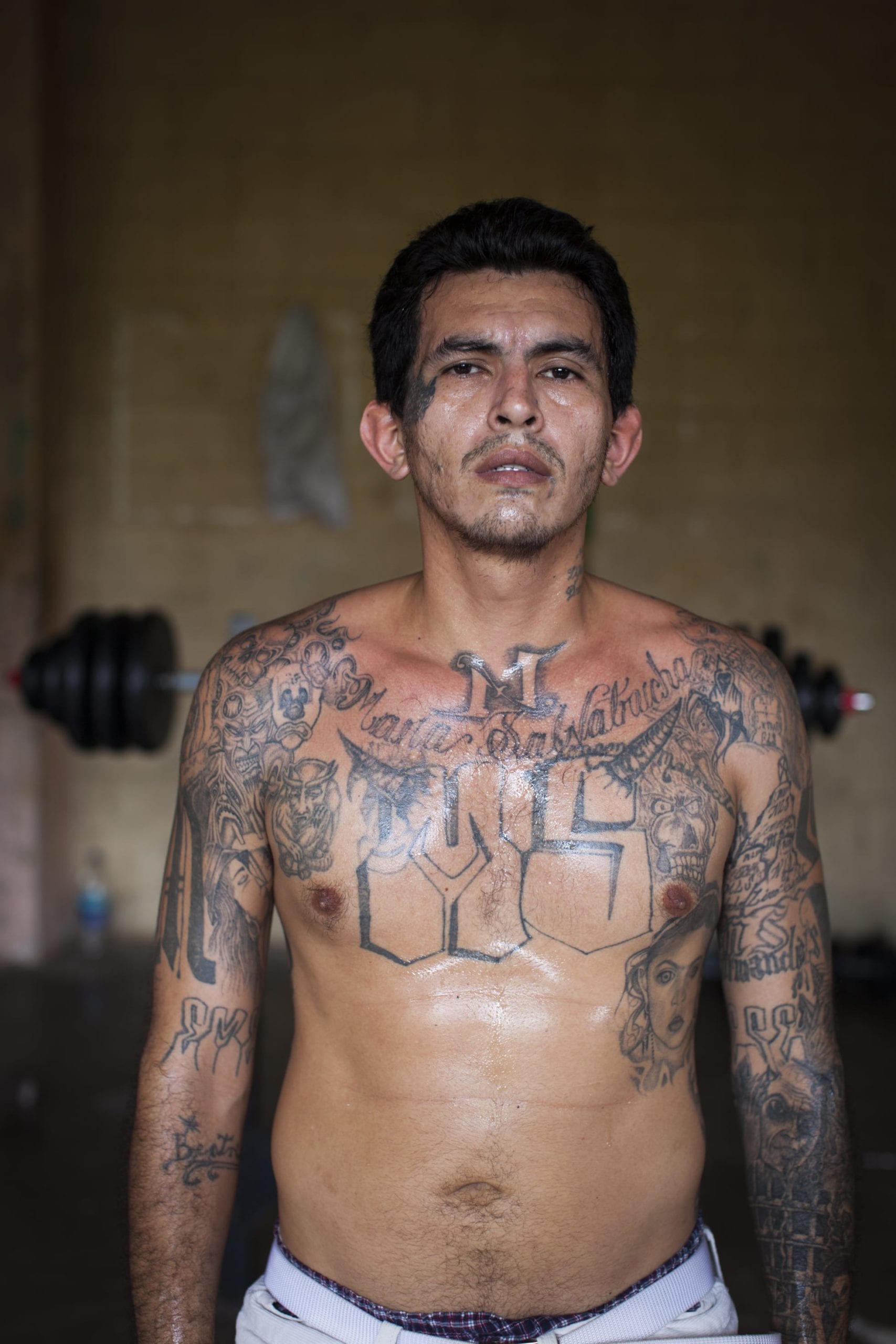Not many photographers get the chance to enter a prison guarded by an army, let alone shoot inside one.
But Adam Hinton managed it, travelling to El Salvador, the most densely populated country in Central America, and gaining access to one of the world’s most dangerous gangs.
Hinton’s photobook MS-13, published this month by Paul Belford, gathers 22 photographs, primarily portraits of members of the gang La Mara Salvatrucha (MS-13).
Each were serving 20 to 40-year sentences in Penal de Ciudad Barrios, a prison with 26,000 inmates – it was built for 800 – and the final destination for the vast majority of convicted MS-13 members.
El Salvador has one of the highest homicide rates in the world, with 4,000 murders this year. Gang culture is rife; just last month, gangs forced a bus strike and killed seven drivers. There are an estimated 70,000 active gang members in El Salvador according to the BBC, and approximately 12,000 of them are behind bars.

But the images seek to show a human side to such dangerous men, Hinton says. “They only exist in certain types of communities: they can’t all be born mindless thugs”, the 50-year-old says to BJP.
Hinton has made a career by focusing on such subcultures. In 2009, he learnt that the majority of the world’s population shifted from rural to urban living.
One of his first series on the theme was taken in a redeveloping slum in Dharavi, Mumbai. Since then, he has travelled to neighbourhoods in Rio de Janeiro, Jakarta, Manila, Caracas, Cape Town and Mongolia, these projects supported by commercial work for the likes of Adidas, Nissan and HSBC.
Originally, Hinton deliberately avoided photographing gangs. “I always liked to go into people’s dwellings and talk about what life was like,” he says. “At first, I deliberately avoided doing something about gangs, but that was what a lot of people think about – the criminality.
“Whenever you talk about going into a slum, everyone’s like: ‘You can’t go in there it’s really dangerous.’ It isn’t really. Often, slums have a really cohesive sense of community. I learnt in Brazil how the gangs are integral in the slums. A lot of people felt they needed them to protect themselves against the police and other gangs.”

In 2013, Hinton saw his chance. On the BBC World Service, he heard of a truce in the El Salvador gang war between MS-13 and their rival gang, 18 Street. Through BBC journalist Linda Pressly he got in touch with Alex Honduras, a fixer who had gang leader contacts in the prison.
Although the truce ended bloodily in 2014, preventing Hinton’s further attempts to visit, he managed to spend a week in San Salvador in January that year. Two people were killed in the city during his visit.
After gaining permission from the leaders, Hinton spent three hours in the prison with the inmates.“When I met the gang members, they chilled out straightaway and acted normally – in the prison they’re probably safer than they will be anywhere else in the world.”
Hinton photographed his subjects with a Canon 5D and just three lenses, directing his subjects to stand in the best light.
But Hinton found, in a prison notorious for the depravity of inmates, grown men interested in baking, or making teddy bears for their children. The inmates were attempting to set up an art studio and a hospital, they told Hinton, which they planned to run themselves.

For MS-13 Paul Belford, who also published Hinton’s other book Shibuya in 2012, selected portraits that primarily concentrate on the gang’s tattoos. “We intuitively felt that less was more,” says Belford. “It’s not really a book about the prison. It’s about the men. A collection of portraits of people whose lives are literally written all over their faces.”
Most of the men have tattoos curling about their torsos. In several, ink creep up over their foreheads. The illustrations show past demons, women they love, expressions of loyalty MS-13.
“The tattoos talk about relationships and people that they’ve killed,” says Hinton. “They tell a story. It’s like a decoration and a sense of identity. They are marking themselves heavily, saying: ‘We are here and don’t belong anywhere else and this is what I do and I’m prepared to kill you, or be killed for this gang.’”
Find more of Adam’s work here.
Subscribe to get more stories like this, delivered to you monthly.
